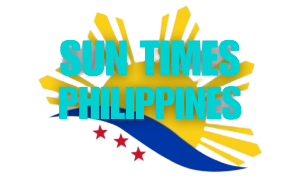Teachers’ Struggles and Strengths in the New Matatag Curriculum and K to 12

Pixabay

Teacher 3
Talusan Central Elem. School
lipcelyn.darunday001@deped.gov.ph
The introduction of the new Matatag curriculum and the ongoing challenges of the K to 12 program have significantly reshaped the landscape of Philippine education. As frontliners in this evolving system, teachers find themselves at the intersection of change, tasked with the critical role of implementing these reforms in the classroom. This journey, while filled with opportunities for growth, is also fraught with numerous struggles that test their resilience and dedication.
Struggles in Adapting to the Matatag Curriculum: One of the most prominent challenges teachers face is the adjustment to the new Matatag curriculum, which aims to streamline and strengthen the educational framework. While the curriculum promises a more focused and relevant learning experience for students, the transition has not been without its hurdles.
Curriculum Familiarization. Teachers are required to familiarize themselves with new content, methodologies, and assessment strategies. This shift demands additional time and effort, often extending beyond regular working hours. The rapid pace of these changes can lead to a sense of overwhelm, as educators balance lesson planning, teaching, and continuous professional development.
Resource Limitations. The success of any curriculum relies heavily on the availability of adequate resources. Many teachers report a lack of instructional materials, including textbooks and digital tools, necessary to fully implement the new curriculum. This scarcity forces educators to be resourceful, often creating their own teaching aids or sourcing materials online, adding to their already considerable workload.
Professional Development Gaps. While professional development sessions are offered, the frequency and depth of these trainings may not fully equip teachers with the skills needed to effectively deliver the new curriculum. There is a growing need for more comprehensive, hands-on training that goes beyond theoretical knowledge, addressing practical classroom applications and problem-solving strategies.
Student Readiness and Engagement. Teachers also grapple with varying levels of student readiness, which can make it challenging to maintain a uniform pace of instruction. Engaging students in a curriculum that is still finding its footing requires innovative teaching approaches, which can be taxing without the right support systems in place.
Strengths That Shine Through. Despite these struggles, teachers exhibit remarkable strengths that not only sustain them but also inspire positive outcomes for their students.
Adaptability and Innovation. Teachers have shown an incredible ability to adapt to the ever-changing educational landscape. They continually innovate their teaching strategies to meet the needs of their students, often integrating technology and creative activities to make learning more engaging. This adaptability is a testament to their commitment to providing quality education, regardless of the challenges they face.
Resilience and Dedication. The resilience of teachers is perhaps their greatest strength. They remain dedicated to their mission of educating the youth, even when faced with significant obstacles. Their perseverance is evident in their willingness to go the extra mile, whether it’s by staying late to prepare lessons, using their own resources for classroom needs, or finding ways to connect with students on a deeper level.
Collaboration and Community Building. Teachers often turn to each other for support, creating a strong sense of community and collaboration within schools. This network of shared knowledge and resources helps alleviate some of the pressures of adapting to new curricula. Teachers work together to develop lesson plans, share best practices, and provide moral support, making the journey a little less daunting.
Student-Centered Approach. Amidst the pressures of curriculum changes, teachers maintain a student-centered approach, focusing on the individual needs and strengths of their learners. They strive to make learning relevant and accessible, often personalizing instruction to cater to diverse learning styles. This commitment to their students’ success is the cornerstone of their teaching philosophy.
Moving Forward. As the Philippine education system continues to evolve, it is crucial to recognize and address the challenges faced by teachers in implementing the new Matatag curriculum and K to 12 pr
ogram. Increased investment in professional development, provision of adequate resources, and active engagement with educators in the policy-making process are essential steps toward creating a more supportive environment for teachers.
Empowering teachers with the tools, training, and resources they need will not only ease their struggles but also amplify their strengths, ultimately benefiting the millions of students who rely on their guidance. As teachers continue to adapt and persevere, their unwavering commitment serves as a powerful reminder of the pivotal role they play in shaping the future of education in the Philippines.






